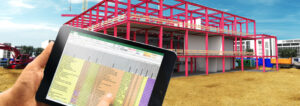What Does BIM Modeling Stand For?
BIM Modeling Stand
BIM is an acronym for building information modeling, which is a process for creating digital models of buildings. BIM modeling can be used at any stage of a construction project, from the initial set-up of a project to the final stages of the construction process. This technology can also be used for renovation projects. It can be beneficial to everyone involved in the construction process. Here’s a closer look at the benefits of BIM and why it’s becoming more popular in the construction industry.
BIM was first introduced in the UK in the early 2000s. The concept has been around since the 1970s, but the term “BIM” became a commonly accepted term in the early 2000s. Different countries have adopted the process at different rates, and in the UK, the standards were based on the ISO 19650 standard. In the late 1970s, the first software tools were available for modelling buildings. Unfortunately, these tools were expensive and complicated.
The benefits of BIM extend well beyond design and construction. It can help manage the construction process from beginning to end. The information that is available in a BIM model can be updated or changed in real time to reflect changes in the project. The accuracy of a BIM model is much higher throughout the entire construction process, which means more profit and lower costs. It also allows experts in different fields to participate in the development of a building.

What Does BIM Modeling Stand For?
The construction industry is a notoriously resistor to new technology, which is why it has largely remained the same with conventional 2D and 3D CAD systems. This is because the construction industry is resistant to newer tools and technologies. Until recently, BIM was only used by architects and engineers, but today, it is the standard for the construction industry. There are many advantages to using BIM, but the main one is that it is better-designed and faster.
Using BIM, a BIM model contains data about the building’s components. It helps project teams coordinate significant disciplines. These disciplines cannot take place simultaneously. Because of this, BIM helps them coordinate their work and identify discrepancies. By creating a BIM model, the construction team can see what they’re working on at any given time. Its collaboration between architects and engineers is more effective.
The advantages of BIM are clear. Using BIM models saves time and money. It can also help the construction process to be more efficient. By using a BIM model, the team can see all the components of a building and how they will interact with them. A BIM model can provide accurate measurements and other important data. It is useful for planning, designing, and documenting a building. The project team can use it to communicate with clients and to keep information up to date.